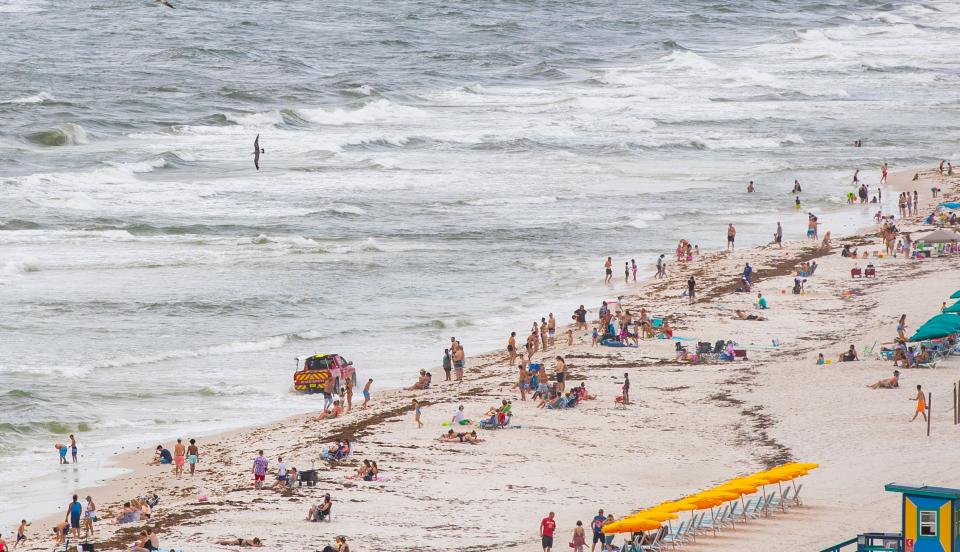National Weather Service aims to keep beachgoers alive with Rip Current Awareness Week
PANAMA CITY BEACH − Regional National Weather Service offices are working to help prevent beach drownings.
According to Wright Dobbs, a meteorologist for the National Weather Service in Tallahassee, his office and the NWS office in Mobile, Alabama, will observe their fourth annual Rip Current Awareness Week from Feb. 26 to March 1.
The initiative was created to help educate the public on the dangers of rip currents and prevent related deaths.

"Unfortunately, we see a number of rip current fatalities every year, and we want to make sure we're getting awareness out about that," Dobbs said. "Many of the folks who are killed by rip currents are people who come visit from other states and aren't familiar (with them) because they never grew up with the kind of conditions we see here along the Gulf Coast."
Nine beachgoers drowned in Bay County last year. Of the drownings, six happened off the coast of Panama City Beach, and three happened on unincorporated county beaches outside the city limits.
Two occurred under single red flags, while the seven others happened with double red flags overhead during very rough surf conditions. All the victims were tourists who died after being caught in rip currents. It is illegal in Bay County to swim in double-red-flag conditions under penalty of a $500 fine.
Rip currents are fast-moving currents created by deep channels in sandbars. The channels run perpendicular to the shoreline and cause water to funnel faster out into deeper waters. Rip currents can vary in strength, depending on how developed the channels are, and they can sometimes be identified from shore where there is a gap in the wave break − areas where the white caps of the breaks are less noticeable.
The best thing a swimmer can do if they're caught in a rip current is swim parallel to shore, meaning toward the left or right of where they are in distress. If they do this, they can break free from the current, often landing on a sandbar where they can stand. If they still cannot stand, they will at least be in calmer water where it will be easier to make it back to shore.
"What we recommend folks do is that they stay tuned to the forecasts and especially seek out those beach flags," Dobbs said. "That's the most important thing that we stress to folks. ... The beach flag system (is) the best way to know what the conditions are like."
Common flag colors used in beach flag warning systems include a green flag for low hazard conditions, a yellow flag for medium hazard conditions, one red flag for high hazard conditions and two red flags for very dangerous conditions.
Panama City Beach and Bay County, however, never fly green flags because officials say beachgoers should always be cautious anytime they enter the Gulf. That's because rip currents can always be present, even under clear skies and calmer surf conditions.
Beach safety: Panama City Beach struggles to hire enough seasonal lifeguards as peak season approaches
To help educate the public during Rip Current Awareness Week, National Weather Service offices in Tallahassee and Mobile plan to post daily content on their Facebook and X (formerly known as Twitter) pages. Each day will focus on a different beach safety-related theme.
Monday will be about the basics of what rip currents are, Tuesday will be about how to spot rip currents, Wednesday will be about how to survive a rip current, Thursday will be about beach forecasts and Friday will be about the beach flag warning system and other resources.
"It seems like we hear about it from year to year that there are (beach) fatalities," Dobbs said. "Any way that we can strive to reduce fatalities from any kind of weather (event) is something we're going to strive to make sure we're messaging."
For more information on rip currents, visit www.weather.gov/tae/ripcurrentawareness.
This article originally appeared on The News Herald: National Weather Service planning week of education on rip currents

